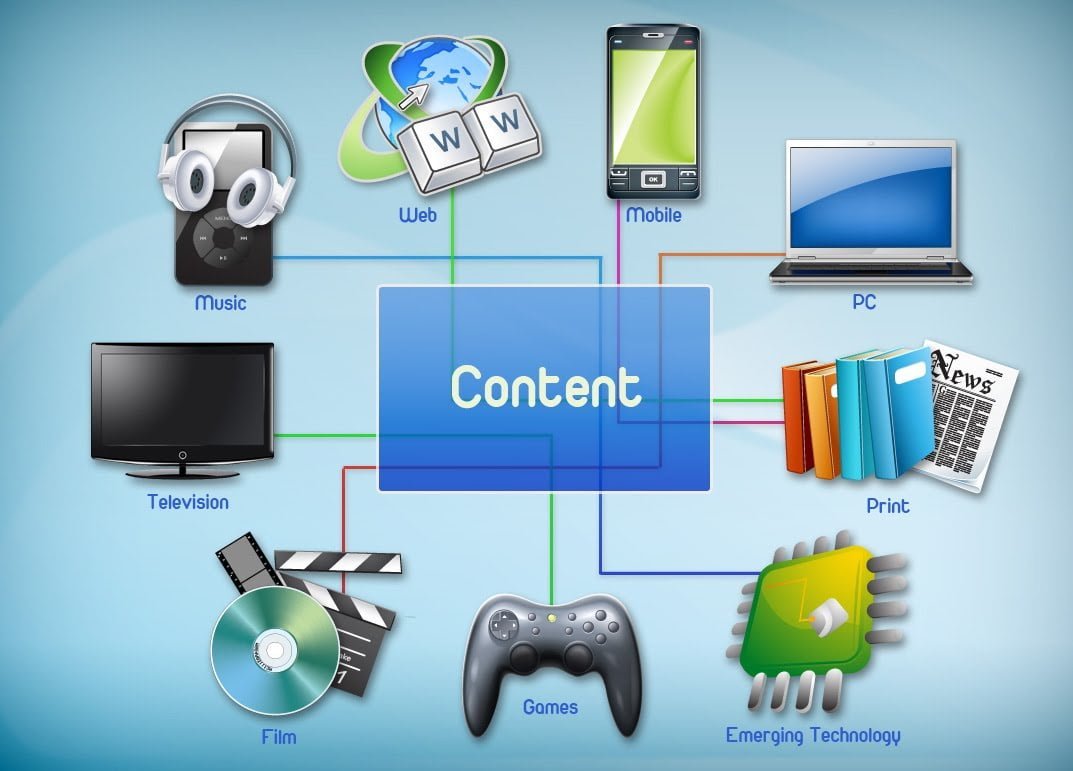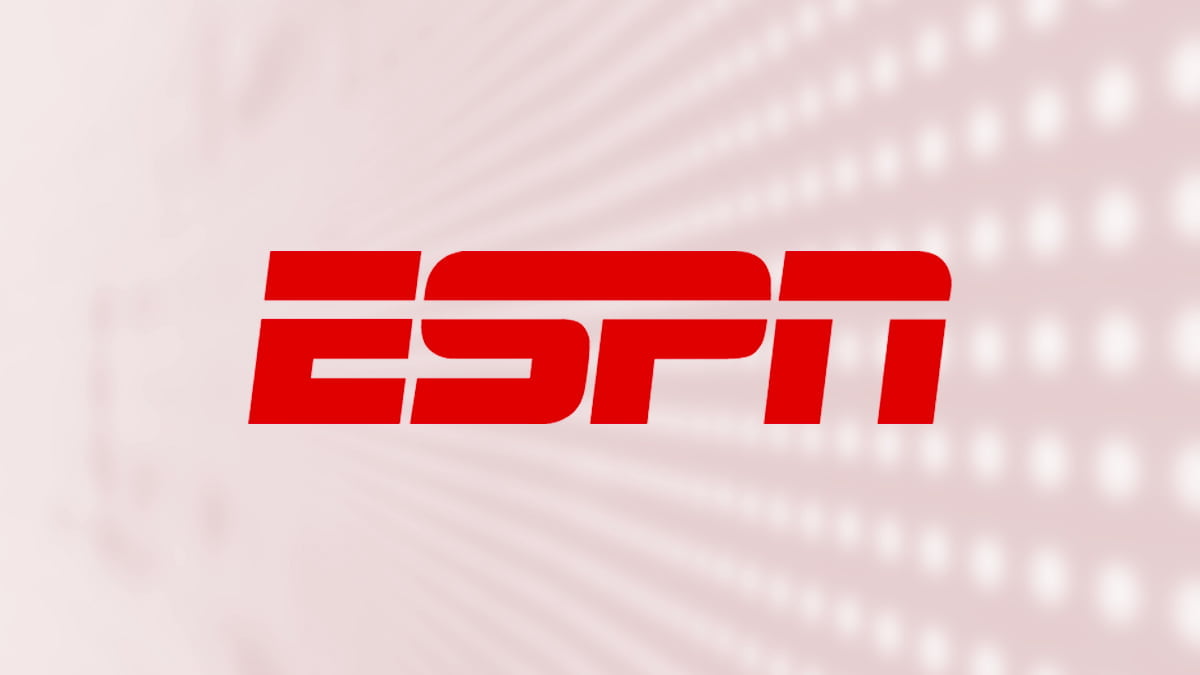In today’s rapidly changing world, sports media consumers are making it known that they want less interruptions during their programming experiences. The problem though, is that media companies make a large portion of their revenues in between the content.
For sports radio stations, commercials occupy 20-25% of an hour’s time. The only other format with similar numbers is News/Talk. And this doesn’t take into account the extra service elements, on-air mentions, and content sponsorships that invade the programming space.
 But despite heavy spot loads, and consistent complaints from listeners, sports talkers continue to enjoy successful ratings. Many deliver high revenues too. So it can’t be all that bad right?
But despite heavy spot loads, and consistent complaints from listeners, sports talkers continue to enjoy successful ratings. Many deliver high revenues too. So it can’t be all that bad right?
Well, the question isn’t whether or not it’s a problem now, it’s “what will be acceptable in the future?”
Look at the issues that have plagued television over the past few years. Everyone thought it was impossible for TV to feel the sting but then the DVR was introduced. Companies then began to witness their commercials being bypassed in favor of content, making their investments in the programming less valuable and necessary.
Then came the boom of YouTube, Netflix, Amazon, Hulu, and other viewing services which put an emphasis on ad-free content. You can watch a short video or full show with minimal interruption on these platforms. For people who are constantly on the go and searching for ways to buy back some of their free time, these type of products are very attractive.
 Now television faces yet another obstacle as cord cutting has become the new trend. People have started switching to streaming services to watch programming because they can control which channels they receive and drastically reduce their costs. What was thought to be an unbreakable business, is now starting to show chinks in its armor.
Now television faces yet another obstacle as cord cutting has become the new trend. People have started switching to streaming services to watch programming because they can control which channels they receive and drastically reduce their costs. What was thought to be an unbreakable business, is now starting to show chinks in its armor.
For radio, the threat isn’t as scary because the medium itself isn’t as large as television. However, when you consider the way the inside of vehicles are being altered to support heavier digital listening, and you add in how people are listening more to audio through their phones, tablets and other supported devices, it doesn’t take a genius to realize that the future isn’t going to include five to six minute stop sets that fail to deliver audience or results.
Add to that the emergence of SiriusXM, who over the past decade have assembled a strong roster of high profile personalities, and present a very rich content experience with minimal disruptions. That approach combined with increased availability inside automobiles has helped the company grow its customer base to nearly 30 million, earning 510 million on 4.6 billion in revenue in 2015. SiriusXM’s stock price has also grown from $.12 cents in January 2009 to $3.70 in January 2016. It currently sits at $3.86.
 When you analyze the radio business, one of its more interesting dilemmas comes from the success of the podcasting platform. Although most in the industry agree that podcasts are beneficial for the listener and important for radio’s future, if you’re an advertiser paying to be on the radio station’s airwaves, how exactly does it benefit you when the show you sponsor over the air, eliminates your commercials during its digital presentation?
When you analyze the radio business, one of its more interesting dilemmas comes from the success of the podcasting platform. Although most in the industry agree that podcasts are beneficial for the listener and important for radio’s future, if you’re an advertiser paying to be on the radio station’s airwaves, how exactly does it benefit you when the show you sponsor over the air, eliminates your commercials during its digital presentation?
Let’s take that one step further. If you’re a listener who’s working an 8-10 hour day at your place of employment, why would you listen to a radio show for a full hour and sit through its sixteen minutes of commercials and another three to four minutes of forced service elements, when you could just download that exact hour of the show later when you get home and listen to it in only forty minutes?
The main reason they sit through it is because they’re confined inside their vehicles for a long duration of time and have limited digital listening opportunities. As the dashboard changes, the options will increase, and the pressure to adapt over the air will be magnified.
Radio station’s may be helping the user by providing excellent podcast broadcasts, but they’re also placing themselves at risk with clients by eliminating their commercials.
But which one is right?
The answer is both.
The radio operator’s challenge is to get the audience to listen to their product and consume as much of it as humanly possible. The client’s responsibility is to create a message worth remembering, and air it during the radio station’s programming to try and create sales and awareness for their brand.
If the station is creative, they’ll develop programs which give the advertiser an opportunity to tap into the audience without getting in the way of the content. Whether that’s through ownership of the podcast player, owning the podcasting web page, live reads by the talent, or through some other digital element. If the goal of the client is to increase business and be viewed favorably by the audience, then they’ve got to trust the radio station to create situations that allow them to benefit.
However, podcasting does make it harder to infiltrate the area they’re most interested in being in. With opportunities inside the content very limited, the question becomes, can radio make enough money with limited sponsorship opportunities or will it bastardize the podcasting platform and hurt its own growth?
 This all boils down to the future and where sports media consumption is headed. We all recognize that digital is booming, television is facing its first setback in quite some time, and radio is stuck in neutral. This is why playing in digital circles is so vital for radio. If the opportunities for sponsorship in these locations are small, then what’s the real economic upside?
This all boils down to the future and where sports media consumption is headed. We all recognize that digital is booming, television is facing its first setback in quite some time, and radio is stuck in neutral. This is why playing in digital circles is so vital for radio. If the opportunities for sponsorship in these locations are small, then what’s the real economic upside?
Despite those facts and challenges, the question that is going to continue to surface is, “how much will the audience pay to eliminate the distractions of advertisers from the content?” We see it happening with Netflix, Amazon and YouTube. The WWE also created their own network and I made the investment for my son who loves the product. If someone enjoys pro wrestling, the $10 per month is well worth it because the content value is exceptional and ad-free.
If you use Facebook (which the majority of the world does) and tomorrow Mark Zuckerberg decided he was going to charge $5 per month to use the service, are you going to tell me that you wouldn’t pay for it? Maybe you’re one of the people who won’t, but I bet you a large number of their users would. Why? Because they see value in the product.
 Earlier this week, Darren Rovell of ESPN spoke out about this very issue as it pertains to Twitter. Here’s what Rovell said about the platform and the idea of paying to use it.
Earlier this week, Darren Rovell of ESPN spoke out about this very issue as it pertains to Twitter. Here’s what Rovell said about the platform and the idea of paying to use it.
Over the last couple of months, it has been extremely frustrating to watch Wall Street destroy Twitter. In dollars and cents, Twitter isn’t producing what Facebook and, Instagram, are doing at the cash register. So tonight, I’m going to start it all off. I am going to agree to pay Twitter $100 a year. If I can get a bank account to put it in, I will do it right now. While the majority of Twitter users will not be willing to do the same, there are people who are in my camp and there are greater numbers who are at least willing to pay SOMETHING.
Rovell took a poll on the issue and received 15,000 responses. Of the responses, 64% said they wouldn’t pay. But, 36% were willing to. That’s with Twitter operating in its current form. Do you think that number might increase with a few upgrades? I think so.
When you have the user base that Twitter does, and 4 out of 10 people are willing to pay for your service, that’s what allows you to limit ads and keep your product content focused.
Which brings us back to radio.
 The reality is that advertising isn’t going to vanish anytime soon. But, the world is shifting and paying for ad-free content. That means radio has an opportunity to open itself up to other revenue possibilities. I’ve said this numerous times, few formats generate the amount of live content that sports talk does. It has mass appeal, can be consumed 24 hours per day, and is real time focused and locally driven.
The reality is that advertising isn’t going to vanish anytime soon. But, the world is shifting and paying for ad-free content. That means radio has an opportunity to open itself up to other revenue possibilities. I’ve said this numerous times, few formats generate the amount of live content that sports talk does. It has mass appeal, can be consumed 24 hours per day, and is real time focused and locally driven.
What I see taking place all too often, is radio operating the same way it has for the past twenty to thirty years. If conversations aren’t happening right now to get out in front of where the world is headed, then once again our beloved business will be licking its wounds after taking another steel boot to the face.
I can’t tell you whether the world will accept five, ten or fifteen minutes of spots per hour in the future, but everything I see happening in other businesses shows me that the consumer wants more control and is willing to pay to eliminate disruptions to earn back some of their time.
Did you know, ad blocking services cost the ad industry 21.8 billion dollars in 2015? A report from PageFair and Adobe stated that 200 million monthly internet users used ad blockers on their browsers. That figure is expected to jump even higher due to Apple introducing ad blocking software for its Safari browser.
Why is that relevant? Because it shows you that people will go to great lengths to block out advertisers which interfere with their content experience.
 Incorporating sponsors into content is going to have to be done in organic fashion, much like the way Bill Simmons weaves them into his podcasts. That’s no different than Coca Cola paying Jimmy Fallon to put a can of soda on his desk during the Tonight Show, or Applebees forking over large dollars to be included in a scene of Will Ferrell’s “Talladega Nights”.
Incorporating sponsors into content is going to have to be done in organic fashion, much like the way Bill Simmons weaves them into his podcasts. That’s no different than Coca Cola paying Jimmy Fallon to put a can of soda on his desk during the Tonight Show, or Applebees forking over large dollars to be included in a scene of Will Ferrell’s “Talladega Nights”.
The approach is highly effective because it doesn’t halt the content for an extended period of time, the talent are more invested in the way the message is presented, and it makes the advertiser feel connected to the show. The audience also doesn’t consider it a big disruption and are more likely to support the client because they’re part of the program they enjoy.
If we think a successful future for radio is going to include fifteen to eighteen minutes of spots, two to three minutes of service elements, and additional content inclusion for advertisers who seek non-traditional revenue opportunities, then get ready for a future that involves a steep decline in listening and ad spending. If seven million people were willing to cut ties with the #1 sports brand in the world (ESPN) over the past three years, then don’t be surprised when they do the same to your brand if you fail to adjust.
 I could go on a further tangent about the future, but let’s turn our attention to the present. To get a sense of how things are working in the current marketplace, I reached out to twenty two Program Directors across the country. I wanted to understand what they were providing in terms of total commercial minutes, unit counts, service elements, and over the air spots vs. online streaming commercials.
I could go on a further tangent about the future, but let’s turn our attention to the present. To get a sense of how things are working in the current marketplace, I reached out to twenty two Program Directors across the country. I wanted to understand what they were providing in terms of total commercial minutes, unit counts, service elements, and over the air spots vs. online streaming commercials.
Keep in mind, some of these brands are having great success despite being saddled with a ton of inventory. That makes it a lot tougher of an argument for any station executive who’s bitching and moaning about the inventory time on their radio station. The measure of a brand’s success isn’t just reflected by ratings, it’s the bottom line too. Heck, the bottom line is what determines whether or not you’ll even be showing up to the office to try and achieve ratings. So I understand why some of these brands are operating the way they are presently.
What I don’t understand though, are why so many stations continue to clutter the airwaves with service elements. If your station is already stuck with 20-25 units and fifteen or more minutes of spots, and the audience is tuning in for your talent, then what’s the reason for adding extra roadblocks to deny them from your hosts? Are you running updates, traffic, weather, and stock reports because it’s what you’ve always done? Or because it was sponsored?
At what point, does the listener’s wishes get taken into account?
 I’m a firm believer in answering one key question when it comes to adding sponsored elements – “what’s in it for the listener?” If the only response is that it’s good for the client, then that’s the wrong reason to put it on the radio station. In that case, find a way to redirect the client to something on the air where they’ll be more included without making it harder for the audience to continue listening.
I’m a firm believer in answering one key question when it comes to adding sponsored elements – “what’s in it for the listener?” If the only response is that it’s good for the client, then that’s the wrong reason to put it on the radio station. In that case, find a way to redirect the client to something on the air where they’ll be more included without making it harder for the audience to continue listening.
Those who don’t know any better will tell you “we have to have this service element, it’s what the client wants” but as Steve Jobs once said, and I’ve used numerous times in previous columns, “people don’t know what they want until you show it to them“.
A good idea that can deliver results will always be attractive to a client. You have the product, and the platform where thousands are stopping by each day. It’s your job to use it to keep people listening longer, and take that increased listening to direct them to your business partners. Those who find a way to excel at content with limited interruptions, while satisfying the demands of the advertiser, will enjoy great success today, tomorrow and beyond.
 Before I jump into my research, I want to ask one question to those who are running companies and see the way the world is changing just as I do – “what’s your plan to keep revenues high and your listenership growing while the demand for less commercial interruptions increases?”
Before I jump into my research, I want to ask one question to those who are running companies and see the way the world is changing just as I do – “what’s your plan to keep revenues high and your listenership growing while the demand for less commercial interruptions increases?”
YouTube, Netflix, Amazon, and iTunes have figured out how to generate revenue by adopting a limited ad model, ESPN is jumping into the skinny bundle business to try to recoup some of the money it’s losing, and radio needs a remedy as well. I look forward to seeing how each group answers this challenge in the future.
Now, here are the questions I presented to twenty two sports radio Program Directors and the results of the study I conducted.
Commercial Minutes Per Hour on Your Radio Station:
- Less Than 14 Minutes Per Hour = 2 (The lowest was 13 minutes)
- 14 to 16 Minutes Per Hour = 19 (Twelve had 15 to 15:30 and Three of them expand to 17 when sales needs arise)
- More than 16 Minutes Per Hour = 1 (One runs 18 minutes)
Commercial Unit Count Per Hour on Your Radio Station:
- Under 20 = 1 (Fifteen was the number)
- Between 20-25 = 6
- Between 26-30 = 6
- No Limit = 9
*** I asked former CBS Radio CEO Dan Mason for his perspective on unit counts during a back and forth chat on Linkedin and he made a great point. He said “I’ve never believed in a unit count because I don’t think it’s possible that a listener will sit through all of the commercials. I’ve taken it as a time out of content is time out of content!”
I agree 100% with what Dan is saying. I used to get all caught up worrying whether or not the radio station was running twenty spots instead of twenty five, but when you step back and think about it, four minutes is four minutes, and no matter what you do during that time, a commercial is still a commercial to the listener. Chances are, they’re going to leave your radio station. The real question is, has your host put something in their head to think about during the break that makes them want to come back. If not, that’s your issue, not whether five or seven spots ran during the stopset. Even promos with better creative, count as commercials to the audience.
Number of Commercial Breaks Per Hour on Your Radio Station:
- Three Breaks Per Hour = 11
- Four Breaks Per Hour = 6
- Mix of 3 to 4 Breaks based on different show clocks = 5
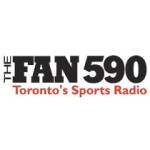 *** If you listen to the advice of Nielsen, they suggest taking as few breaks as possible. In Toronto for example, The Fan 590 takes two breaks per hour. That means the audience is getting a lot more uninterrupted content. While The Fan does very well with that strategy, so do other stations in the states which use three to four breaks per hour. At one point Mike and Mike took five breaks per hour, and when I carried their show in St. Louis, they were in the Top 3 with that approach.
*** If you listen to the advice of Nielsen, they suggest taking as few breaks as possible. In Toronto for example, The Fan 590 takes two breaks per hour. That means the audience is getting a lot more uninterrupted content. While The Fan does very well with that strategy, so do other stations in the states which use three to four breaks per hour. At one point Mike and Mike took five breaks per hour, and when I carried their show in St. Louis, they were in the Top 3 with that approach.
There is no perfect formula for how often a station should break. I can make a case to start an hour with forty five minutes of content and take one fifteen minute break but let’s be honest, is an advertiser going to spend their money to be heard during the eighth minute of a fifteen minute commercial break? Not a chance.
Whether you run three or four breaks per hour should come down to a myriad of factors.
First, who is the host and what type of pace do they provide? Are they slower and better at keeping the audience hanging on their every word? Or are they quick paced and tougher to endure for longer stretches? Some talent are built to deliver ten great minutes but when pushed to twenty minutes they become repetitive and start searching for direction. Others need time to set the scene and tell compelling stories, and when rushed through quick segments, it takes away their ability to do what they’re good at.
 I believe you have to also consider how many meters are active each hour, when they’re using your radio station the most, and where you stand your best chances of keeping them on your airwaves for an extra quarter hour or two. Once you have those answers and you’ve analyzed the strengths of your talent, then you can make an informed decision on whether or not two, three, or four breaks per hour best fits your show.
I believe you have to also consider how many meters are active each hour, when they’re using your radio station the most, and where you stand your best chances of keeping them on your airwaves for an extra quarter hour or two. Once you have those answers and you’ve analyzed the strengths of your talent, then you can make an informed decision on whether or not two, three, or four breaks per hour best fits your show.
One last suggestion on this subject, don’t be afraid to create different clocks for different shows. Some folks in your traffic and sales department may bitch because it makes their jobs more difficult, but the reality is this, you’re paid to drive ratings, and satisfy the audience. Whether Billy in Sales or Suzy in traffic like it or not, the listener comes first. Whatever has to be done to make their listening experience more enjoyable and longer, that’s what is best for the radio station. Decisions can’t be made because of objections down the hall. That’s the type of short sighted thinking that hurts your brand.
What Runs During Breaks on The Stream (Same Spots/Promos or Something Different):
- Same Spots as Over The Air = 8
- Different Spots and Created Pieces = 14
*** If we see digital dollars increasing, and streaming listening providing stronger returns for sports radio stations, then why not take advantage of it by offering it separately to advertisers? I understand it’s easier to run a full simulcast of the on-air product, but we are in the business of making money right? If sales has two options to sell, that’s certainly better than one, and it allows stations to set different price points for groups who wish to invest in their over the air product vs. their online product.
 I stumbled upon one group that I think is doing some great things in this space. Capitol Broadcasting in Raleigh allows only two clients to exclusively sponsor their stream on three of their properties (WCMC/WDNC/WCLY). They’ll give each client a :30 second produced spot, and a two-minute window to talk about their business, and then they complete their breaks with other local show promos, play by play promotion or classic moments sports vignettes.
I stumbled upon one group that I think is doing some great things in this space. Capitol Broadcasting in Raleigh allows only two clients to exclusively sponsor their stream on three of their properties (WCMC/WDNC/WCLY). They’ll give each client a :30 second produced spot, and a two-minute window to talk about their business, and then they complete their breaks with other local show promos, play by play promotion or classic moments sports vignettes.
This strategy enables them to keep the stream cleaner, highlight two important businesses who have recognized the value of owning the radio station’s stream, and eliminate poorly produced PSA’s which almost always end up on radio station streams. They charge a premium for the sponsorship and that makes it easier for the sales team since they’re not under the gun to sell out fifteen to sixteen minutes of on-air and digital spots per hour. That said, whether a station allows two exclusive clients, three, or four, the point is, there’s money to be made online, and this is a smart way of doing it.
Created Elements That Air During Programming (Traffic, Weather, Stock, Ski, Sports Updates):
- Sports Updates = 19
- Traffic Reports = 10
- Weather Reports = 7
- Stock Reports = 3
- Ski Reports = 1
- Fishing Reports = 1
- Trending Now = 2 (two more stations are switching soon from updates to trending now reports)
- Team Reports = 1
- CBS Sports Minutes = 3
*** Dan Mason who I mentioned earlier, wrote a great article on Linkedin about a small station he discovered in White Plains, NY. During the piece he praised the brand (107.1 The Peak in White Plains, NY) for their commitment to providing service elements. Mason said “the jocks ACTUALLY give the local weather and temperature. Imagine that. Major Market PD’s say listeners can get that from an app. Well, you better get that back on the radio or the listener will get it from an app permanently.”
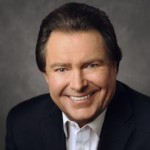 That makes a lot of sense to me. However, I also think that applies differently per format. In this particular example, Mason was talking about a music station and I agree that music brands should have more service elements and community focused benchmarks because the only way they can connect with local listeners is in between the songs.
That makes a lot of sense to me. However, I also think that applies differently per format. In this particular example, Mason was talking about a music station and I agree that music brands should have more service elements and community focused benchmarks because the only way they can connect with local listeners is in between the songs.
But when it comes to sports talk, my opinion differs. First, sports talkers air A LOT more commercials than music brands. Secondly, they talk forty to forty-five minutes per hour. A sports listener tunes in for insight, information, entertainment value, opinion, interaction, interviews, etc. They’re not coming to a sports station for the endless amount of forced interruptions that get tossed their way during the course of a one hour commute.
I do understand the decision to provide traffic, especially in big markets. Most listeners deal with it daily and they’d rather not leave the radio station to find out which roadways to avoid. But even if I give you that one as a freebie, does the listener really need to know the weather, skiing conditions, and stock prices on a sports talker? They’re coming to you for sports talk, not those other elements.
 Ask yourself this, how has SportsCenter survived all of this time without them? Don’t tell me it’s different because it’s television. I built 95.7 The Game in San Francisco and 101 ESPN in St. Louis without any of them and both prospered. As a matter of fact, we even imaged each station with liners that said “No Traffic and Weather Together, We Do Sports”.
Ask yourself this, how has SportsCenter survived all of this time without them? Don’t tell me it’s different because it’s television. I built 95.7 The Game in San Francisco and 101 ESPN in St. Louis without any of them and both prospered. As a matter of fact, we even imaged each station with liners that said “No Traffic and Weather Together, We Do Sports”.
Taking that approach doesn’t make it right and it doesn’t mean it will work for your brand. But I’ve found that the audience is comfortable being fed sports content and they won’t object to receiving more of it. The only way they’re leaving is if they don’t like the personality who’s providing the content.
There are a number of things I’ve covered in this article and I hope much of it gets your wheels spinning. I think about the future of this industry daily, and I try to approach it with the understanding that ratings and revenue matter, but without brand loyalty and adapting to the needs of the audience, you’re left searching for water in the middle of the desert.
It’s clear that listeners wants more control and are going to further lengths to remove interruptions from their programming experiences. We’ve seen it evolve with SiriusXM, WWE Network, Amazon, Netflix, YouTube, and others. There’s no question that the model works IF you provide content and a platform worth investing in.
 But let me be crystal clear, I’m not advocating that radio should start charging listeners for content. This platform isn’t built that way and if we started doing it tomorrow, I think we’d be in terrible shape.
But let me be crystal clear, I’m not advocating that radio should start charging listeners for content. This platform isn’t built that way and if we started doing it tomorrow, I think we’d be in terrible shape.
However, if we’re going to dive deeper into podcasting, and look to limit and reduce the disruptions that exist on our airwaves in order to increase listener activity, then we’ve got to be a step ahead on how we’re going to monetize things better. It’s easy to suggest increasing rates, but unless we’re promising advertisers a higher return on investments, that’s going to be an uphill climb.
If there’s one big question that should be on the mind of everyone in this format and industry it’s, “how do we provide a heavier content experience, grow our bottom line, and still reduce our interruptions to better satisfy the needs of the audience“? The ones who figure that out, are going to be very successful in the future.
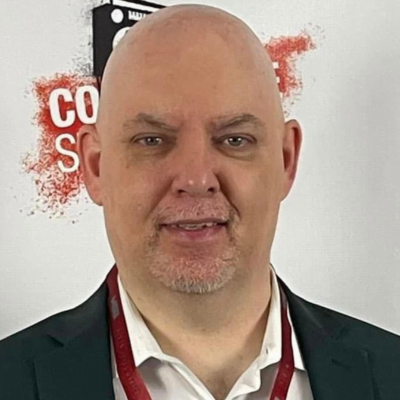
Jason Barrett is the President and Founder of Barrett Media since the company was created in September 2015. Prior to its arrival, JB served as a sports radio programmer, launching brands such as 95.7 The Game in San Francisco, and 101 ESPN in St. Louis. He also spent time programming SportsTalk 950 in Philadelphia, 590 The Fan KFNS in St. Louis, and ESPN 1340/1390 in Poughkeepsie, NY. Jason also worked on-air and behind the scenes in local radio at 101.5 WPDH, WTBQ 1110AM, and WPYX 106.5. He also spent two years on the national stage, producing radio shows for ESPN Radio in Bristol, CT. Among them included the Dan Patrick Show, and GameNight.
You can find JB on Twitter @SportsRadioPD. He’s also reachable by email at Jason@BarrettMedia.com.






